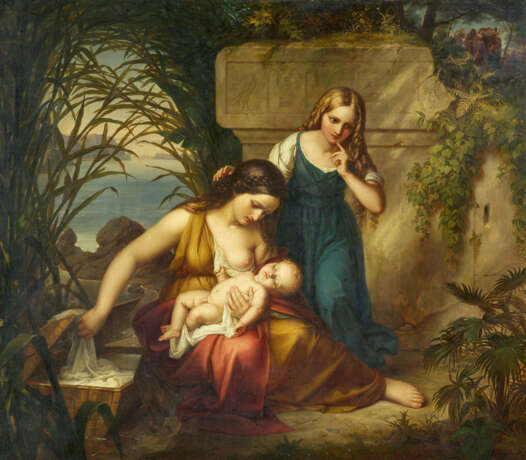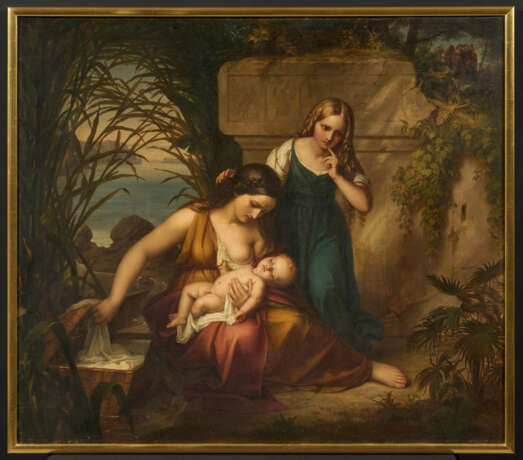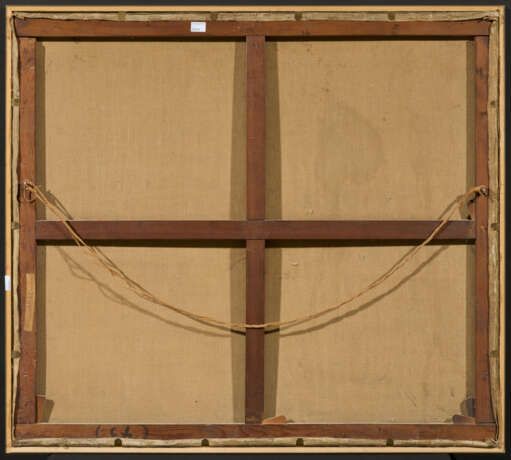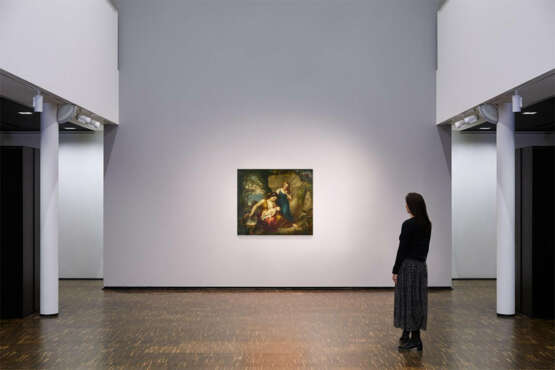ID 1319836
Lot 1267 | Karl Joseph Begas. Abandonment of Moses
Estimate value
€ 14 000 – 20 000
1794 Heinsberg - 1854 Berlin
Title:
Abandonment of Moses.
Date:
Ca. 1832.
Technique:
Oil on canvas.
Mounting:
Relined.
Measurement:
116 x 134cm.
Notation:
Signed and illegibly dated lower centre: "Begas 183.".
Frame:
Framed.
Verso old label: "C. Begas, Aussetzung Mosis"
Literature:
F. von Boetticher: Malerwerke des neunzehnten Jahrhunderts. Vol. I, 1, p. 72, no. 29 (measurements slightly diverging). There it is indicated: "1832 oder 1833 gem.";
Verzeichnis der in der Stästischen Gemälde-Sammlung zu Düsseldorf befindlichen Kunstwerke, Düsseldorf 1897, p. 8, no. 15, there it is indicated as not signed.
Provenance:
Private ownership, Germany,
Presumably Städtische Gemälde-Sammlung, Düsseldorf;
Presumably Stegelmann family, Düsseldorf.
Karl Theodor Begas was not yet 40 years old and already a highly successful artist and professor at the Berlin Academy of Arts when he painted the present work around 1832. The son of a high-ranking judicial official, he grew up in Cologne and Bonn and received his artistic training in Paris under Antoine Jean Gros. The Prussian King Frederick William III became aware of the young artist there in 1815, bought one of his paintings, commissioned others and granted him a scholarship to extend his stay in Paris. Begas' career took off: in 1821 he moved to Berlin and became a member of the Academy of Arts. Another Prussian scholarship enabled him to spend two years in Italy, where he joined the Nazarenes. Karl Begas settled in Berlin in 1824 and was appointed royal Prussian court painter in 1846.
Karl Begas became extremely successful and popular with his religious and genre paintings. He was also a sought-after and very productive portraitist. The influences of French art, the Nazarenes and the narrative Düsseldorf school of painting, which he incorporated into his work, characterised Berlin painting in the mid-19th century.
This large-format painting is narrative in nature:
In a secluded corner on the banks of the Nile, a desperate mother struggles to make the right decision. The Egyptian pharaoh has ordered all male Jewish babies to be killed. The woman here is about to lay her sleeping infant in the rush basket after breastfeeding. She will have to entrust her child to the waves of the Nile, which can be seen in the background of the left half of the picture, in order to give it a chance to survive. While the mother sees no other way out, her daughter Miriam, standing next to her, seems to be thinking of a rescue plan. She puts her hand on the back of her mother's neck as she crouches on the floor. She has raised her left index finger to her mouth, pondering. In the top right-hand corner of the painting - as in medieval paintings - we can see the scene in the future. The pharaoh's daughter, who has discovered the infant in the Nile, is advised by Miriam to entrust it to her mother as a wet nurse. In this way, mother and child will be reunited. The heroine of the story, however, is the young girl Miriam, whose loyalty to her brother made the 'happy ending' of the story possible. The 1817 'Verzeichnis der in der Städtischen Gemäldesammlung zu Düsseldorf befindlichen Kunstwerke' lists a painting by Karl Begas with an identical motif and the same dimensions. However, it says 'without artist's mark'.
| Artist: | Carl Joseph Begas (1794 - 1854) |
|---|---|
| Applied technique: | Oil |
| Auction house category: | Paintings by newer masters |
| Artist: | Carl Joseph Begas (1794 - 1854) |
|---|---|
| Applied technique: | Oil |
| Auction house category: | Paintings by newer masters |
| Address of auction |
VAN HAM Kunstauktionen GmbH Hitzelerstr. 2 50968 Köln Germany | ||||||||||||||
|---|---|---|---|---|---|---|---|---|---|---|---|---|---|---|---|
| Preview | |||||||||||||||
| Phone | +49 221 92586215 | ||||||||||||||
| Fax | +49 221 92 58 62 4 | ||||||||||||||
| Buyer Premium | 32% | ||||||||||||||
| Conditions of purchase | Conditions of purchase | ||||||||||||||
| Business hours | Business hours
|






